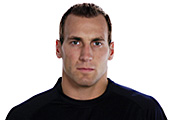 The off-season provides an opportunity for hockey players to enhance and develop their skills and fitness. Nevertheless, it is necessary for dedicated players and athletes to approach off-season training with a well structured plan in order to maximize gains.
The off-season provides an opportunity for hockey players to enhance and develop their skills and fitness. Nevertheless, it is necessary for dedicated players and athletes to approach off-season training with a well structured plan in order to maximize gains.
Know Your Areas of Improvement
Athletes should know the areas where they want to improve. This is the reason why self evaluation is very important. If you need help identifying areas that need improvement ask your coaches or teammates as they should be able to provide constructive criticism. At least two or three skills can be improved during the off season training. It is essential not to train in all areas at one time since this can hinder proper skill development. For instance, you shouldn’t try to work on 1st 3 step acceleration while you are trying to improve your endurance as the 2 goals require very different energy systems.
Identify Weakness
Once weaknesses are identified, it is necessary to work with a coaching staff to have a proper training regimen. This does not mean that coaches should be present during the entire course of the training; however, it would be very helpful if they provide ideas that players can use. HockeyOT.com uses a hockey-specific fitness test to assist athletes in identifying weak spots in their fitness level.
Follow A Plan
Players should follow the training plan consistently. It is important to practice the exercises and routines consistently or repetitively in order to master the skill. It is true that repetition is considered to be the mother of skill. Of course be realistic and plan rest and recovery days into your plan so that you don’t burn out.
Seek Guidance From An Expert
Amateur players should seek the guidance of experts and instructors. This is necessary to make sure that their routines are safely and properly executed. If a person is doing repetitive shots using a bad technique, then he or she is simply reinforcing bad habits.
Identify On-Ice Training Opportunities
Always identify on ice training opportunities in order to assess whether the training is effective. There are a lot of things that can be practiced off-ice such as stickhandling, foot speed, balance, shooting, acceleration, and reaction just to name a few. However, it is necessary to try these skills on ice from time to time to determine whether the practiced routines are really working. HockeyOT.com uses an on-ice testing sequence during in-season training so that players can see improvements in their on-ice performance.
On-Ice Lateral Agility Test
Work Hard And Smart
Always work hard and smart. This means that players should know the areas that they need to work on in order to make use of their time, effort, and energy wisely. An example of working hard and smart is to choose exercises in the gym that require a full body coordinated effort such as the barbell deadlift or hang clean pull. A poor choice would be a seated dumbbell curl which only requires muscle activation of a few select muscle groups. Remember that hockey is a full body activity and off-ice training should replicate that effort.
The depth of these training exercises would depend on the age and competition level of the player. A younger player might spend 2 days per week doing a strength training routine but practice stick handling and shooting pucks everyday. A more advanced junior player might spend 4 days per week doing a strength training routine but still should be doing puck work everyday.
Remember, it is the way that makes the warrior!
Dr. Chad Moreau is the President of HockeyOT.com, an online training site dedicated to improving the fitness level of hockey players of all levels. He was the former Strength & Conditioning/Nutrition Consultant for the Edmonton Oilers (NHL) and the Long Beach Ice Dogs (ECHL). For more information please visit hockeyot.com.














